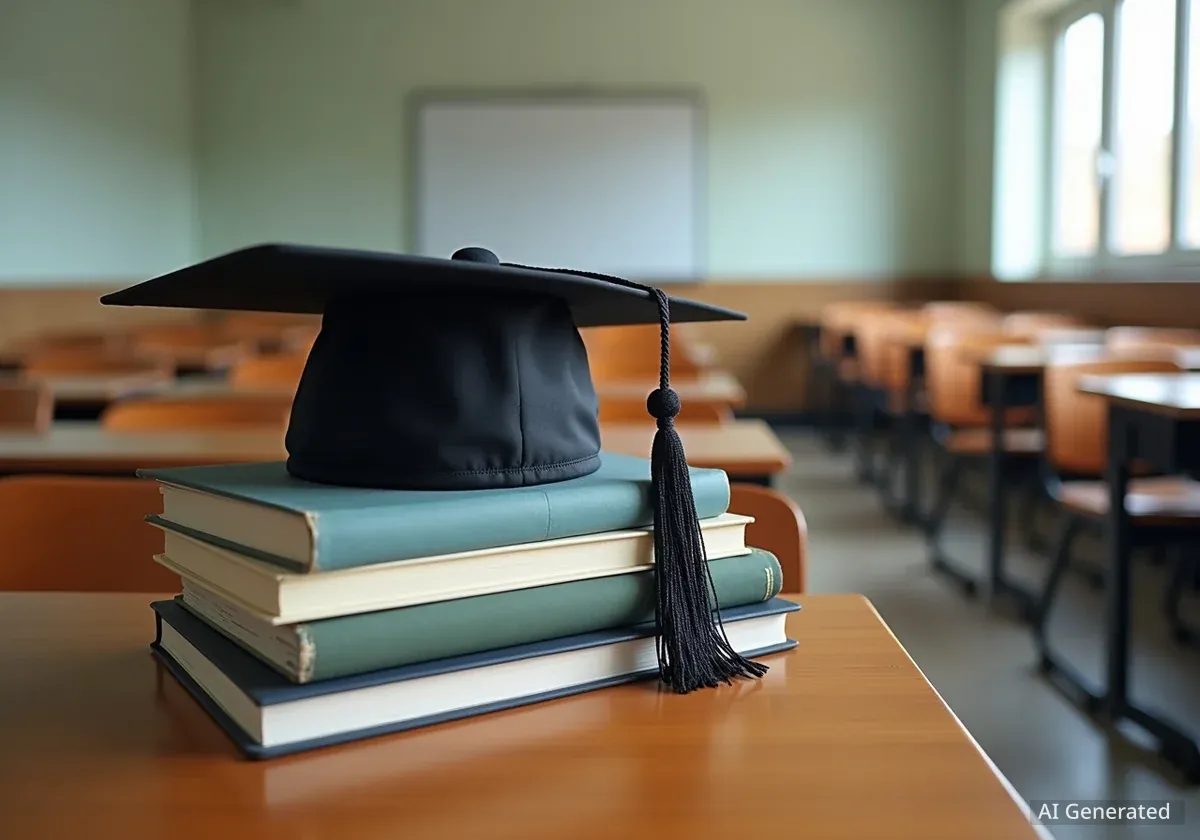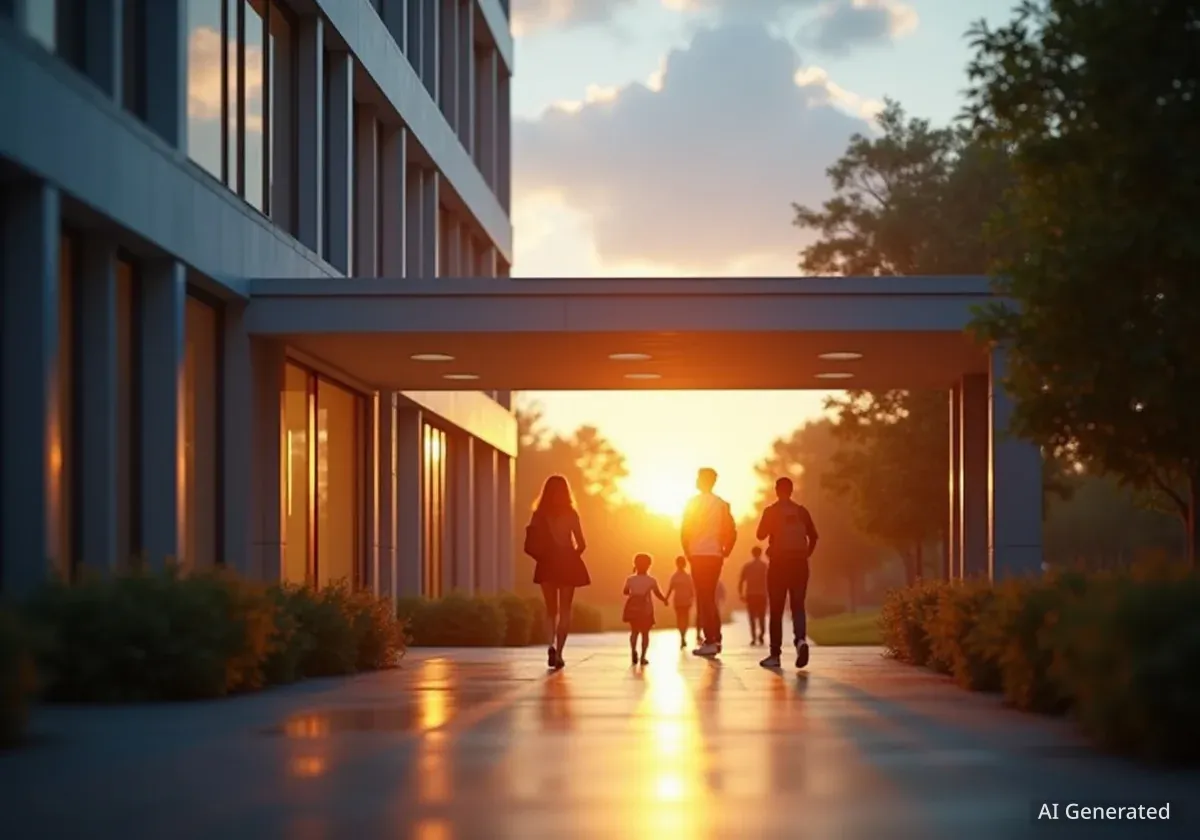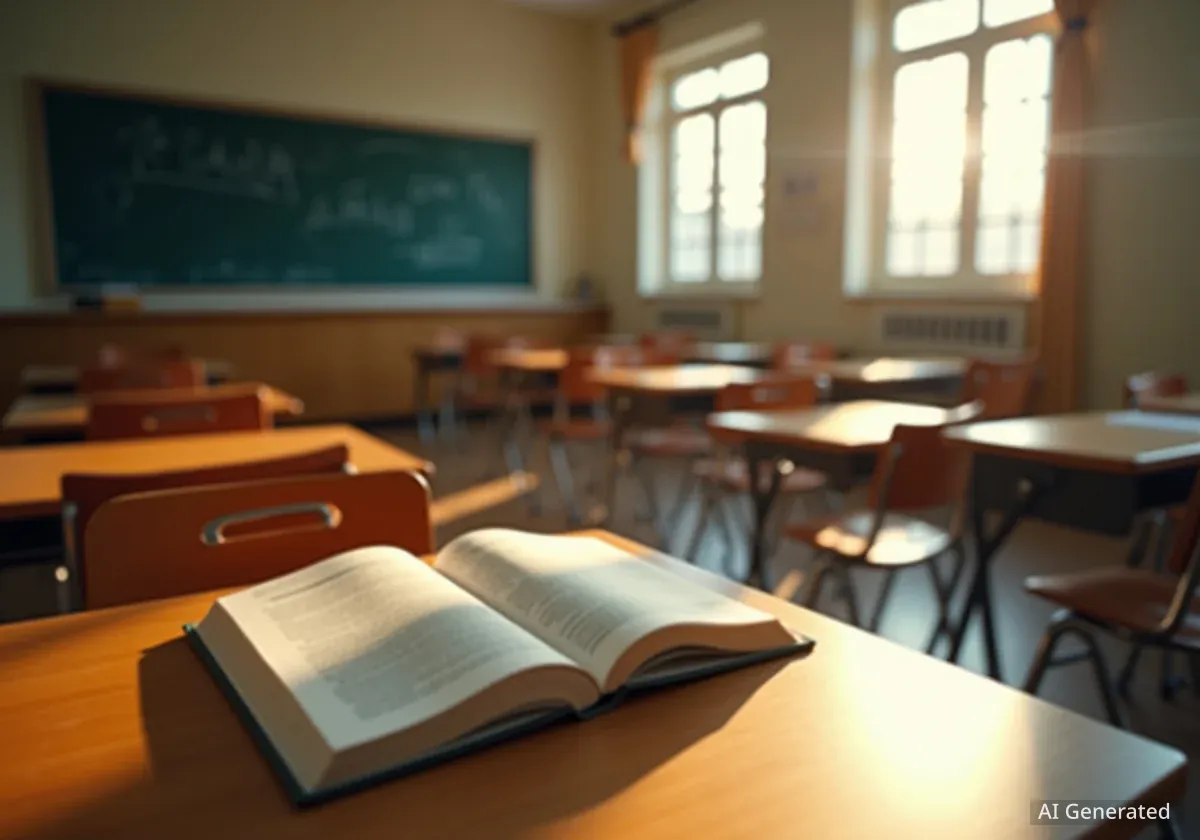A recent comprehensive report on the state of public education in Illinois has revealed a system of contrasts, showing notable progress in kindergarten readiness and high school graduation rates while simultaneously highlighting persistent challenges. Key areas of concern include stagnant academic performance in core subjects, high rates of chronic absenteeism, and increasing costs for higher education.
Key Takeaways
- Kindergarten readiness has improved, indicating more children are prepared for elementary school.
- High school graduation rates across the state are on an upward trend.
- Student proficiency in reading and mathematics has shown little to no improvement.
- Chronic absenteeism and student mental health remain significant, post-pandemic challenges.
- The cost of attending public colleges and universities in Illinois continues to rise.
A System of Progress and Persistent Problems
The latest analysis of Illinois' public education system presents a multifaceted picture of its current health. While the state has made measurable gains in foundational and capstone metrics, the core academic achievement of its students appears to be stalled. This duality suggests that while some initiatives are succeeding, systemic issues continue to hinder overall progress.
Education analysts point to these mixed results as a critical indicator of where resources and policy changes are most needed. The report serves as both a validation of successful strategies and a call to action to address deeply rooted problems that affect student learning and well-being from elementary school through college.
Understanding the Data
The findings are based on a collection of data points from state education agencies, including standardized test scores, attendance records, and graduation statistics. This information is used to build a comprehensive overview of the educational landscape, helping lawmakers, administrators, and parents understand both strengths and weaknesses.
Gains in Early Education and Graduation Rates
One of the most encouraging findings in the report is the improvement in kindergarten readiness. A larger percentage of children are entering elementary school with the foundational skills necessary for success, a positive sign for the state's early childhood education programs. This metric is often seen as a leading indicator of future academic success.
At the other end of the K-12 spectrum, Illinois has seen a consistent increase in its high school graduation rate. This achievement reflects successful efforts to keep students engaged and on track to earn a diploma. According to the report, these gains are a testament to the work of educators and support staff in high schools across the state.
Higher graduation rates are linked to better long-term outcomes for individuals, including higher earning potential and lower unemployment rates. The state's progress in this area is a significant economic and social achievement.
Why These Metrics Matter
Improving both kindergarten readiness and graduation rates are long-term goals for many education systems. Success in these areas suggests that investments in early learning and high school completion strategies are paying off. However, the report cautions that these positive trends must be supported by strong academic instruction throughout a student's entire K-12 journey.
Stagnant Scores in Reading and Math
Despite the positive bookends of kindergarten readiness and graduation, the report reveals a troubling lack of progress in core academic subjects. Student proficiency in both reading and mathematics has remained largely flat, failing to show significant improvement in recent years. This stagnation is a major concern for educators and policymakers.
The lack of growth in these fundamental areas suggests that many students are advancing through the school system without mastering the skills necessary for success in higher education or the modern workforce. Experts believe this academic plateau is one of the most urgent issues facing the Illinois education system.
"While it's excellent that more students are graduating, we must ensure that a diploma represents true academic proficiency. Stagnant literacy and numeracy skills are a barrier to opportunity, and we need to address the root causes of this issue in the classroom."
The report suggests that post-pandemic academic recovery has been slower than anticipated. Many school districts are still grappling with learning gaps that emerged during the period of remote and hybrid instruction. Addressing these gaps requires targeted interventions and sustained support for both students and teachers.
Challenges Beyond the Classroom
The analysis also sheds light on critical issues that extend beyond academic performance. Chronic absenteeism, defined as missing 10% or more of school days for any reason, continues to be a pervasive problem in many districts. High rates of absenteeism are strongly correlated with lower academic achievement and an increased risk of dropping out.
Alongside attendance issues, student mental health has emerged as a top-tier concern. The report notes that schools are facing a growing demand for mental health services and support systems. The well-being of students is directly linked to their ability to learn and engage in the classroom, making this a critical component of educational success.
The Link Between Attendance and Well-being
Many experts see a direct connection between rising mental health challenges and chronic absenteeism. Students struggling with anxiety, depression, or other issues are more likely to miss school. This creates a cycle where poor attendance leads to academic struggles, which can in turn worsen a student's mental health. Schools are increasingly focused on integrated approaches that address both issues simultaneously.
- Causes of Absenteeism: Can include illness, lack of transportation, family instability, and disengagement from school.
- Impact on Learning: Missing just two days of school per month can significantly impact a student's ability to keep up with coursework.
- School Response: Many districts are hiring more counselors and social workers to provide direct support to students and families.
The Growing Burden of Higher Education Costs
The report's scope also includes post-secondary education, where it identifies the rising cost of college as a significant barrier for many Illinois families. Tuition and fees at public universities and colleges in the state have continued to climb, placing a heavier financial burden on students and potentially limiting access for those from low-income backgrounds.
This trend has broad implications for the state's economic future. If higher education becomes unaffordable for a large segment of the population, it could lead to a less-skilled workforce and exacerbate existing inequalities. The report calls for a renewed focus on college affordability and financial aid to ensure that higher education remains an accessible pathway to opportunity.





